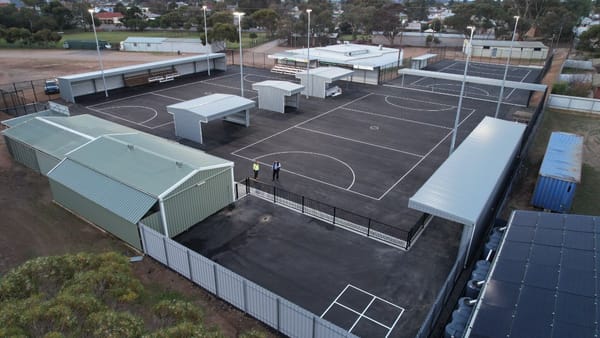Deputy Premier remains defensive about Lower Murray levee failures
The state government is doing its best to maintain River Murray levees and to respect local landowners, Susan Close says in this one-on-one interview.

Locals support locals – that’s why this post advocating for local people is free to read. Your support helps Murray Bridge News tell important local stories. Subscribe today.

Deputy Premier Susan Close has blamed “extreme” weather for a series of heartbreaking levee failures along the River Murray last week.
Water over-topped six levees between Pompoota and Tailem Bend last Friday, flooding newly sown pastures for the second time in less than a year.
A seventh levee, at Placid Estate near Wellington East, was breached and will have to stay that way until repairs can be safely undertaken.
State Climate, Environment and Water Minister Susan Close’s initial response was to complain that “Liberal misinformation” had made things sound worse than they were, and to spruik the $3.2 million the government had spent on the levees since last summer’s floods.
In a more detailed statement on Tuesday, she noted that Primary Industries and Regions SA had quickly responded to the failures, deploying pumps and working with landowners.
But there was “still a significant way to go”, she conceded, and the state government was “still considering options for the intermediate and longer-term stabilisation of the (Lower Murray) levee banks”.
Murray Bridge News sought further information from Ms Close in a one-on-one interview; her responses follow.
Locals support locals. Your support helps Murray Bridge News tell important local stories.
Levee failure was ‘very, very distressing’, minister concedes
Murray Bridge News asked whether it was acceptable that multiple levees had failed when river levels were not unusually high, amid winds that were not unusually strong.
Ms Close argued at first that six of the affected levees hadn’t failed at all – “they maintained their structural integrity but were over-topped” – and insisted the weather had been “pretty gusty”.
However, she conceded that the levees had still not been built back up to the level they were at prior to January’s flood peak.
They had only been raised high enough to allow farmland to be de-watered.
She accepted that Friday’s episode had been “very, very distressing”.
“By no means do I seek to minimise the impact it had,” she said.
But she said affected irrigators would not get any extra assistance beyond the grant programs that were already available.
Levees’ future remains in limbo
Many questions still remained unanswered eight months after the flood peak, Ms Close said.
“How do we determine what height the levees should be at?” she asked.
“What role are they playing: are they protecting from floods or protecting agricultural production?
“Are they on private land, government land, council land, and who benefits from their maintenance?”
The state government would begin to consider those questions after a committee of Lower Murray irrigators submitted a funding proposal in “the next few weeks or months”.
“It will be an expensive process,” she predicted.
“Everyone pays if the government pays for it.
“It’s got to be something that has priority and value.”
Minister ‘not aware’ of any work bans on government levees
Another contentious question during the past 12 months has been: just who is allowed to work on a government-owned levee?
Several Murraylands residents have told Murray Bridge News about instances where property owners were reportedly banned from helping with levee strengthening and repair works.
As recently as this week, Pompoota resident Michelle Thiele told Murray Bridge News locals had been turned away by police and State Emergency Service personnel as they attempted to save the levee there back in January.
Ms Close said she was not aware of any such cases, but would check with her department.
She had heard of cases where contractors had chosen to halt levee works for safety reasons, but property owners had chosen to keep working to try and save their farms.
Should locals be listened to more closely?
Asked whether Friday’s failures would force the government to make better use of local expertise as the flood response continued – a sore point locals had raised time and again since the peak – Ms Close was non-committal.
The government’s experts were being paid to be knowledgeable about the work they were doing, she said.
“Occasionally” landowners wanted to do things one way and government contractors wanted to do things another way.
“That doesn’t mean the government is always going to be right,” she said.
“(But) the Department of Environment and Water has been very respectful about working with locals.
“If there’s a disagreement about the location (of work), about the technology, about the material being used, we have to work with that.”
A parliamentary inquiry will cast a critical eye over the state government’s flood response in the coming months.
Locals support locals. Your support helps Murray Bridge News tell important local stories.





